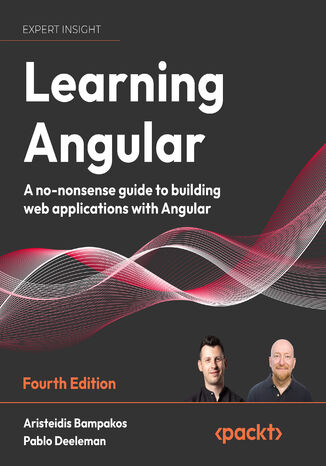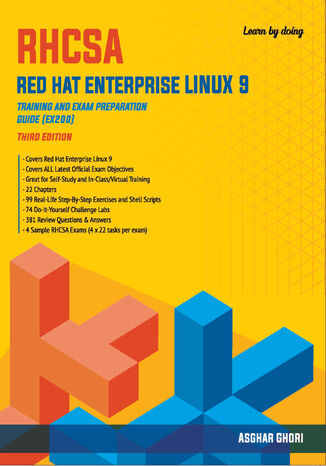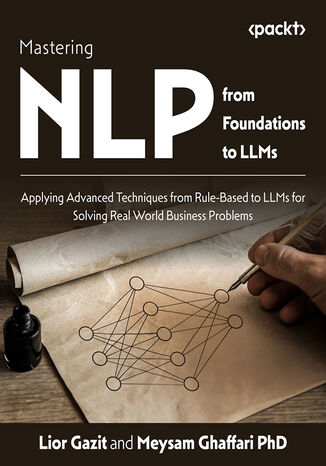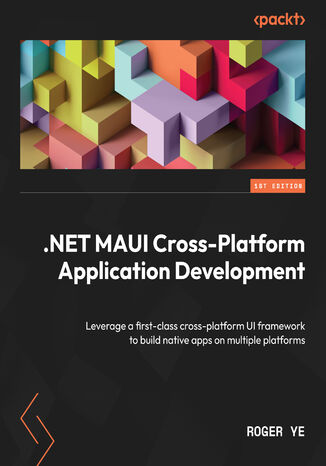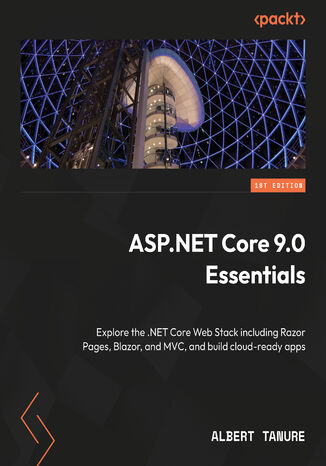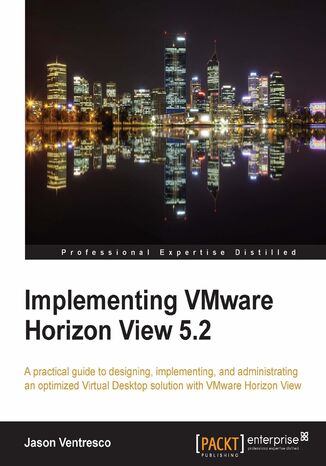Kategorie
-
- Bitcoin
- Bizneswoman
- Coaching
- Controlling
- E-biznes
- Ekonomia
- Finanse
- Giełda i inwestycje
- Kompetencje osobiste
- Komputer w biurze
- Komunikacja i negocjacje
- Mała firma
- Marketing
- Motywacja
- Multimedialne szkolenia
- Nieruchomości
- Perswazja i NLP
- Podatki
- Polityka społeczna
- Poradniki
- Prezentacje
- Przywództwo
- Public Relation
- Raporty, analizy
- Sekret
- Social Media
- Sprzedaż
- Start-up
- Twoja kariera
- Zarządzanie
- Zarządzanie projektami
- Zasoby ludzkie (HR)
-
- Architektura i wnętrza
- BHP
- Biznes i Ekonomia
- Dom i ogród
- E-Biznes
- Ekonomia i finanse
- Ezoteryka
- Finanse
- Finanse osobiste
- Firma
- Fotografia
- Informatyka
- Kadry i płace
- Kobieca
- Komputery, Excel
- Księgowość
- Kultura i literatura
- Naukowe i akademickie
- Ochrona środowiska
- Opiniotwórcze
- Oświata
- Podatki
- Podróże
- Psychologia
- Religia
- Rolnictwo
- Rynek książki i prasy
- Transport i Spedycja
- Zdrowie i uroda
-
- Aplikacje biurowe
- Bazy danych
- Bioinformatyka
- Biznes IT
- CAD/CAM
- Digital Lifestyle
- DTP
- Elektronika
- Fotografia cyfrowa
- Grafika komputerowa
- Gry
- Hacking
- Hardware
- IT w ekonomii
- Pakiety naukowe
- Podręczniki szkolne
- Podstawy komputera
- Programowanie
- Programowanie mobilne
- Serwery internetowe
- Sieci komputerowe
- Start-up
- Systemy operacyjne
- Sztuczna inteligencja
- Technologia dla dzieci
- Webmasterstwo
-
- Antologie
- Ballada
- Biografie i autobiografie
- Dla dorosłych
- Dramat
- Dzienniki, pamiętniki, listy
- Epos, epopeja
- Esej
- Fantastyka i science-fiction
- Felietony
- Fikcja
- Humor, satyra
- Inne
- Klasyczna
- Kryminał
- Literatura faktu
- Literatura piękna
- Mity i legendy
- Nobliści
- Nowele
- Obyczajowa
- Okultyzm i magia
- Opowiadania
- Pamiętniki
- Podróże
- Poemat
- Poezja
- Polityka
- Popularnonaukowa
- Powieść
- Powieść historyczna
- Proza
- Przygodowa
- Publicystyka
- Reportaż
- Romans i literatura obyczajowa
- Sensacja
- Thriller, Horror
- Wywiady i wspomnienia
-
- Archeologia
- Bibliotekoznawstwo
- Filmoznawstwo
- Filologia
- Filologia polska
- Filozofia
- Finanse i bankowość
- Geografia
- Gospodarka
- Handel. Gospodarka światowa
- Historia i archeologia
- Historia sztuki i architektury
- Kulturoznawstwo
- Lingwistyka
- Literaturoznawstwo
- Logistyka
- Matematyka
- Medycyna
- Nauki humanistyczne
- Pedagogika
- Pomoce naukowe
- Popularnonaukowa
- Pozostałe
- Psychologia
- Socjologia
- Teatrologia
- Teologia
- Teorie i nauki ekonomiczne
- Transport i spedycja
- Wychowanie fizyczne
- Zarządzanie i marketing
-
- BHP
- Historia
- Kodeks drogowy. Prawo jazdy
- Nauki prawne
- Ochrona zdrowia
- Ogólne, kompendium wiedzy
- Podręczniki akademickie
- Pozostałe
- Prawo budowlane i lokalowe
- Prawo cywilne
- Prawo finansowe
- Prawo gospodarcze
- Prawo gospodarcze i handlowe
- Prawo karne
- Prawo karne. Przestępstwa karne. Kryminologia
- Prawo międzynarodowe
- Prawo międzynarodowe i zagraniczne
- Prawo ochrony zdrowia
- Prawo oświatowe
- Prawo podatkowe
- Prawo pracy i ubezpieczeń społecznych
- Prawo publiczne, konstytucyjne i administracyjne
- Prawo rodzinne i opiekuńcze
- Prawo rolne
- Prawo socjalne, prawo pracy
- Prawo Unii Europejskiej
- Przemysł
- Rolne i ochrona środowiska
- Słowniki i encyklopedie
- Zamówienia publiczne
- Zarządzanie
-
- Afryka
- Albumy
- Ameryka Południowa
- Ameryka Środkowa i Północna
- Australia, Nowa Zelandia, Oceania
- Austria
- Azja
- Bałkany
- Bliski Wschód
- Bułgaria
- Chiny
- Chorwacja
- Czechy
- Dania
- Egipt
- Estonia
- Europa
- Francja
- Góry
- Grecja
- Hiszpania
- Holandia
- Islandia
- Litwa
- Łotwa
- Mapy, Plany miast, Atlasy
- Miniprzewodniki
- Niemcy
- Norwegia
- Podróże aktywne
- Polska
- Portugalia
- Pozostałe
- Przewodniki po hotelach i restauracjach
- Rosja
- Rumunia
- Słowacja
- Słowenia
- Szwajcaria
- Szwecja
- Świat
- Turcja
- Ukraina
- Węgry
- Wielka Brytania
- Włochy
-
- Filozofie życiowe
- Kompetencje psychospołeczne
- Komunikacja międzyludzka
- Mindfulness
- Ogólne
- Perswazja i NLP
- Psychologia akademicka
- Psychologia duszy i umysłu
- Psychologia pracy
- Relacje i związki
- Rodzicielstwo i psychologia dziecka
- Rozwiązywanie problemów
- Rozwój intelektualny
- Sekret
- Seksualność
- Uwodzenie
- Wygląd i wizerunek
- Życiowe filozofie
-
- Bitcoin
- Bizneswoman
- Coaching
- Controlling
- E-biznes
- Ekonomia
- Finanse
- Giełda i inwestycje
- Kompetencje osobiste
- Komunikacja i negocjacje
- Mała firma
- Marketing
- Motywacja
- Nieruchomości
- Perswazja i NLP
- Podatki
- Polityka społeczna
- Poradniki
- Prezentacje
- Przywództwo
- Public Relation
- Sekret
- Social Media
- Sprzedaż
- Start-up
- Twoja kariera
- Zarządzanie
- Zarządzanie projektami
- Zasoby ludzkie (HR)
-
- Antologie
- Ballada
- Biografie i autobiografie
- Dla dorosłych
- Dramat
- Dzienniki, pamiętniki, listy
- Epos, epopeja
- Esej
- Fantastyka i science-fiction
- Felietony
- Fikcja
- Humor, satyra
- Inne
- Klasyczna
- Kryminał
- Literatura faktu
- Literatura piękna
- Mity i legendy
- Nobliści
- Nowele
- Obyczajowa
- Okultyzm i magia
- Opowiadania
- Pamiętniki
- Podróże
- Poezja
- Polityka
- Popularnonaukowa
- Powieść
- Powieść historyczna
- Proza
- Przygodowa
- Publicystyka
- Reportaż
- Romans i literatura obyczajowa
- Sensacja
- Thriller, Horror
- Wywiady i wspomnienia
-
- Filozofie życiowe
- Komunikacja międzyludzka
- Mindfulness
- Ogólne
- Perswazja i NLP
- Psychologia akademicka
- Psychologia duszy i umysłu
- Psychologia pracy
- Relacje i związki
- Rodzicielstwo i psychologia dziecka
- Rozwiązywanie problemów
- Rozwój intelektualny
- Sekret
- Seksualność
- Uwodzenie
- Wygląd i wizerunek
- Życiowe filozofie
Learning Angular. A no-nonsense guide to building web applications with Angular 15 - Fourth Edition
Aristeidis Bampakos, Pablo Deeleman
As Angular continues to reign as one of the top JavaScript frameworks, more developers are seeking out the best way to get started with this extraordinarily flexible and secure framework. Learning Angular, now in its fourth edition, will show you how you can use it to achieve cross-platform high performance with the latest web techniques, extensive integration with modern web standards, and integrated development environments (IDEs).The book is especially useful for those new to Angular and will help you to get to grips with the bare bones of the framework to start developing Angular apps. You'll learn how to develop apps by harnessing the power of the Angular command-line interface (CLI), write unit tests, style your apps by following the Material Design guidelines, and finally, deploy them to a hosting provider.Updated for Angular 15, this new edition covers lots of new features and tutorials that address the current frontend web development challenges. You’ll find a new dedicated chapter on observables and RxJS, more on error handling and debugging in Angular, and new real-life examples.By the end of this book, you’ll not only be able to create Angular applications with TypeScript from scratch, but also enhance your coding skills with best practices.
Embark on a journey through Red Hat Enterprise Linux 9, beginning with the basics of local installation and initial system interactions. Our course guides you through fundamental and advanced file management techniques, ensuring you can handle any file-related tasks with ease. Explore user management in-depth, from basic to advanced levels, providing you with the skills to manage users and groups effectively.Delve into the core aspects of the Linux operating system, including the Bash shell, process management, and job scheduling. Gain expertise in package management, both basic and advanced, to keep your system up-to-date and efficient. Understand the intricacies of the Linux boot process, system initialization, and system tuning to optimize performance and reliability.The course also covers essential networking concepts, including device management, connections, and hostname resolution. You'll learn to secure your system with SSH, firewall configuration, and SELinux. Additionally, explore storage management, local file systems, and swap configurations to ensure robust data handling. Finally, enhance your automation skills with shell scripting and containers, preparing you for modern DevOps environments.
Lior Gazit, Meysam Ghaffari, Asha Saxena
Do you want to master Natural Language Processing (NLP) but don’t know where to begin? This book will give you the right head start. Written by leaders in machine learning and NLP, Mastering NLP from Foundations to LLMs provides an in-depth introduction to techniques. Starting with the mathematical foundations of machine learning (ML), you’ll gradually progress to advanced NLP applications such as large language models (LLMs) and AI applications. You’ll get to grips with linear algebra, optimization, probability, and statistics, which are essential for understanding and implementing machine learning and NLP algorithms. You’ll also explore general machine learning techniques and find out how they relate to NLP. Next, you’ll learn how to preprocess text data, explore methods for cleaning and preparing text for analysis, and understand how to do text classification. You’ll get all of this and more along with complete Python code samples.By the end of the book, the advanced topics of LLMs’ theory, design, and applications will be discussed along with the future trends in NLP, which will feature expert opinions. You’ll also get to strengthen your practical skills by working on sample real-world NLP business problems and solutions.
The Music Producer's Guide to Ableton Live will help you sharpen your production skills and gain a deeper understanding of the Live workflow. If you are a music maker working with other digital audios workstations (DAWs) or experienced in Ableton Live, perhaps earlier versions, you’ll be able to put your newfound knowledge to use right away with this book.You’ll start with some basic features and workflows that are more suitable for producers from another DAW looking to transfer their skills to Ableton Live 11.2. As you explore the Live concept, you’ll learn to create expressive music using Groove and MIDI effects and demystify Live 11’s new workflow improvements, such as Note Chance and Velocity Randomization. The book then introduces the Scale Mode, MIDI Transform tools, and other key features that can make composition and coming up with melodic elements easier than ever before. It will also guide you in implementing Live 11's new and updated effects into your current workflow.By the end of this Ableton Live book, you’ll be able to implement advanced production and workflow techniques and amplify live performance capabilities with what the Live 11 workflow has to offer.
An evolution of Xamarin.Forms, .NET Multi-platform App UI (.NET MAUI) is a cross-platform framework for creating native mobile and desktop apps with C# and XAML. Using .NET MAUI, you can develop apps that’ll run on Android, iOS, macOS, and Windows from a single shared code-base. This step-by-step guide provides a comprehensive introduction to those who are new to .NET MAUI that will have you up to speed with app development using .NET MAUI in no time.The book begins by showing you how to develop a cross-platform application using .NET MAUI and then helps you build an app throughout the chapters. You’ll gain all the knowledge needed to create a cross-platform application for Android, iOS, the mac OS, and Windows from a single shared code-base using .NET MAUI. As you advance, you’ll get to grips with the entire application development lifecycle, from design and implementation through to deployment to the app store through the development of a password manager app using KeePassLib. The concluding chapters will teach you how to integrate the latest frontend technology into your app through .NET MAUI Blazor.By the end of this book, you’ll have learned how to develop your own cross-platform applications using .NET MAUI.
Android is one of the most popular mobile operating systems presently. It uses the most popular programming language, Java, as the primary language for building apps of all types. However, this book is unlike other Android books in that it doesn’t assume that you already have Java proficiency.This new and expanded second edition of Learning Java by Building Android Games shows you how to start building Android games from scratch. The difficulty level will grow steadily as you explore key Java topics, such as variables, loops, methods, object oriented programming, and design patterns, including code and examples that are written for Java 9 and Android P. At each stage, you will put what you’ve learned into practice by developing a game. You will build games such as Minesweeper, Retro Pong, Bullet Hell, and Classic Snake and Scrolling Shooter games. In the later chapters, you will create a time-trial, open-world platform game. By the end of the book, you will not only have grasped Java and Android but will also have developed six cool games for the Android platform.
Build cutting-edge web applications using ASP.NET Core 9 with this comprehensive guide from Microsoft MVP Albert Tanure, a seasoned .NET expert with over 20 years of experience as a cloud solutions architect. Albert brings unparalleled expertise in building modern web applications to ASP.NET Core 9 Essentials to help you kickstart your journey on the right foot.Starting with the platform’s fundamental concepts, you’ll work through practical exercises to develop web applications with powerful UI frameworks, deliver flexible and scalable solutions through an API approach, and explore advanced topics such as customizing request flows and implementing robust security measures. You’ll get to grips with cloud-native practices to prepare your applications for cloud environments. Whether you’re a beginner or an experienced developer, this book is your guide to building modern, secure, and adaptable web applications with ASP.NET Core.By the end, you'll have the skills to create professional web applications that are scalable, resilient, and secure.
VMware Horizon View helps you simplify desktop and application management while increasing security and control. This book will introduce you to all of the components of the VMware Horizon View suite, walk you through their deployment, and show how they are used. We will also discuss how to assess your virtual desktop resource requirements, and build an optimized virtual desktop. Implementing VMware Horizon View 5.2 will provide you the information needed to deploy and administer your own end-user computing infrastructure. This includes not only the View components themselves, but key topics such as assessing virtual desktop resource needs, and how to optimize your virtual desktop master image.You will learn how to design and deploy a performant, flexible and powerful desktop virtualization solution using VMware Horizon View. You will implement important components and features, such as VMware View Connection Server, VMware View Composer, VMware View Transfer Server, and VMware View Security Server.Implementing VMware Horizon View 5.2 will take you through application virtualization with VMware ThinApp, the implementation of Persona Management, and creation of Desktop Pools. We then cover View Client options, Desktop maintenance, and Virtual Desktop Master Image. Finally we discuss View SSL certificates management, Group Policies, PowerCLI, and VMware View Design and Maintenance to help you get the most out of VMware View.If you want to learn how to design, implement and administrate a complex, optimized desktop virtualization solution with VMware View, then this book is for you.

